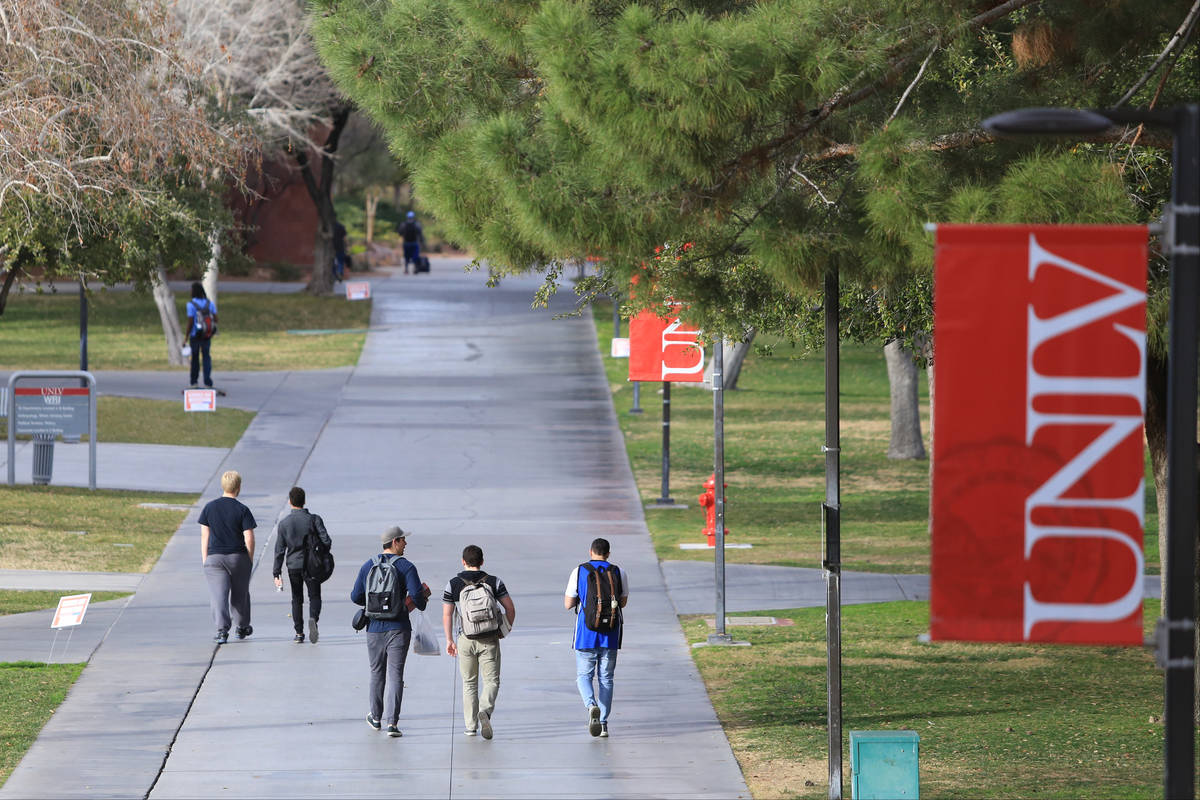Nevada colleges sticking with mostly remote instruction in spring
Nevada’s colleges and universities plan to continue to offer a large majority of classes remotely during spring semester due to the COVID-19 pandemic.
The Nevada System of Higher Education’s Board of Regents did not act after hearing presentations Friday from college and university presidents about plans for spring. For the most part, the schools intend to offer similar proportions of online versus in-person classes as this semester.
“So as we all know, we are nine months into this pandemic or so and what once was thought to be a brief, acute event has become a marathon,” NSHE Chancellor Melody Rose told regents.
School reopening plans must comply with federal health and safety directives and Gov. Steve Sisolak’s orders related to COVID-19, Rose said. By nature, those are moving targets, she added, and campuses have adjusted accordingly as the situation with the pandemic continues to evolve.
Each plan must be flexible and include contingencies in case COVID-19 restrictions become more strict once spring semester begins. They also must mandate face coverings in all outdoor and indoor public spaces on campuses and limit occupancy based on current restrictions.
UNLV, which has more than 31,000 students, plans to offer about 80 percent of classes online this spring.
The university is adjusting course schedules this spring so students don’t bunch up in hallways and on campus between classes, President Keith Whitfield said.
UNLV has reported a total of 490 cases — 400 of those among students — since March. Slightly more than half were among people who weren’t on campus while infectious.
“Overall, we’ve managed to keep our numbers down well below the rate of infection of our surrounding community,” Whitfield said.
So far during the pandemic, the university has distributed 12,000 cloth face masks, 25,000 disposable face masks, 5,000 bottles of hand sanitizer, 1,100 disinfecting kits and 1,300 teaching station cleaning kits.
College of Southern Nevada, a community college with about 27,000 students and three Las Vegas Valley campuses, will offer about 85 percent of spring classes remotely. In-person classes will be held for hands-on career and technical programs, and science labs.
Nevada State College in Henderson, which has about 7,100 students, plans to offer about 75 percent of instruction online and in-person instruction will largely be lab courses.
President Bart Patterson said the college’s administrators believe it’s important to keep minimum campus facilities open so students who don’t have good options for a place to study have somewhere they can go.
At the University of Nevada, Reno, which has more than 20,700 students, spring semester plans will be largely consistent with fall semester, President Brian Sandoval said.
Spring break has been eliminated to minimize any unnecessary travel exposure, Sandoval said. Winter classes will be held fully remotely, and spring semester will include a mix of in-person and remote classes.
At Desert Research Institute, employees who can are working from home and will continue to do so this spring as conditions warrant, President Kumud Acharya said. Faculty may continue to access lab facilities and do field work for critical research, he added.
During their meeting Friday, regents also:
— Approved Desert Research Institute’s 2020-25 strategic plan.
It includes goals such as increasing the number of successful proposals by 10-15 percent, new partnerships and collaborations by 15 percent, and DRI’s presentations, seminars and guest lectures by 20 percent.
Regent Jason Geddes commended Acharya for the strategic plan and his focus on DRI’s researchers. He said one thing that’s missing from the plan is baseline numbers to measure progress toward goals.
DRI, established in 1959, has campuses in Las Vegas and Reno. Faculty members aren’t tenured and generate their own salaries through external funding such as contracts and grants.
After working as interim president for a year, Acharya was hired on a permanent basis in September under a four-year contract.
— Heard a presentation about UNLV metrics, including enrollment, and retention and graduation rates.
UNLV has 31,142 students this semester — down just 29 students compared with fall 2019. And the number of undergraduate students is up 39.
“As we look at enrollment this fall, we were able to maintain our enrollment despite the pandemic,” Whitfield said.
Contact Julie Wootton-Greener at jgreener@reviewjournal.com or 702-387-2921. Follow @julieswootton on Twitter.











































